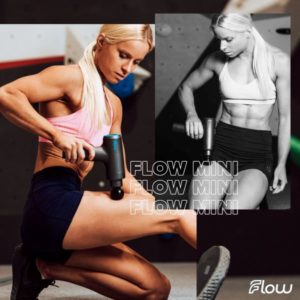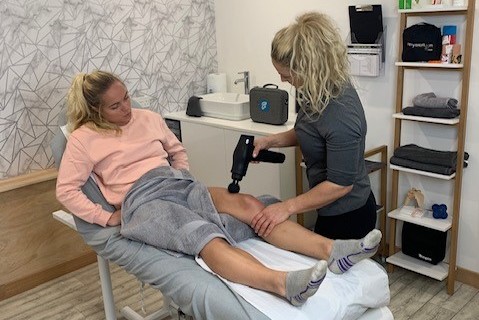Many of you will probably remember treating your running related twinges and aches with tiger balm, frozen peas and tubigrip bandages. While these are all still available, you now have more enticing options to choose from.
Over the past couple of years, massage guns have become one of the most popular recovery gadgets. These vibration or percussion tools can be used for self-treatment and many therapists now use with their clients. Perhaps you have had one used on you recently?
Do they really work?
As a Physiotherapist the short answer is yes. From my experiences of using them with patients (often runners) and also on myself, I have experienced first-hand the rapid and efficient benefits that they can offer.
What does the science say?
Research indicates that the vibration causes a tonic vibration reflex (TVR) within our muscles. Initially this will stimulate your muscles via the nervous system but with a continuation of the same stimulus a phenomenon known as habituation can occur, leading to a reduction of the stimulation and a potential reduction in sensitivity. This is not unique to massage guns, when you receive a massage you will often feel heightened sensation and even increased pain before you begin to get used to the treatment and begin to relax. The difference between a hands-on approach and a vibration tool is the ease of self-application and often a more rapid pain reduction.
Research also suggests that vibration can reduce delayed onset muscle soreness (DOMS) when compared to no vibration. While the available research is promising there are still many questions that need to be answered in relation to vibration speeds and dosages.
Some tools like the Flow have different speed settings and a unique variable speed setting that allows you to find the desired speed.
A good vibration tool should also be designed to minimise vibration at the handle, so the user does not feel like they are holding a power tool. In addition, a high-quality massage gun should be quiet. Nobody likes a barrage of mechanical noise, especially your neighbours!

What’s the difference between a percussion tool and a vibration tool?
The difference is determined by the amplitude of the treatment head – not the speed. The Flow Pro for example has an amplitude of 14mm and is classed as percussion. The Flow Mini has amplitude of 10mm and is classed as vibration. The differences in feel are often subtle but percussion can certainly get deeper into the muscle physically.
Should you buy one?
You are most likely to find a massage gun really helpful and a good thing to have around the house or in the clinic. They are quick and easy to use and often very effective at reducing pain. It may be sensible to try one first and always make sure you have your injuries professionally assessed before you reach for a gun!
Daniel Lawrence
UK Physiotherapist
You can find out more about Daniel on Instagram and YouTube
You can 25% on all Flow massage guns until the end of the year. Use Runchat25 at the checkout to save: flowsportstech.co.uk






